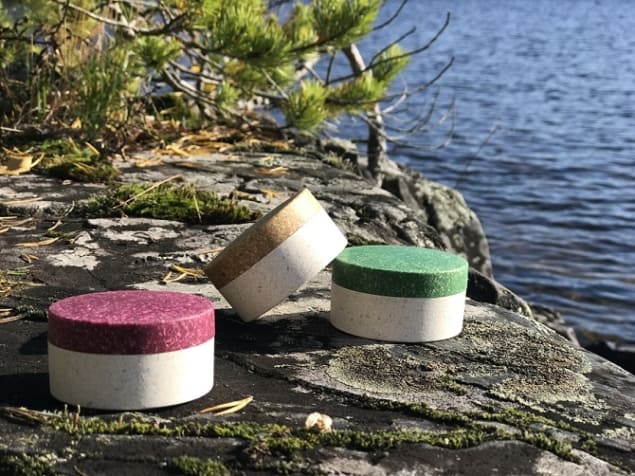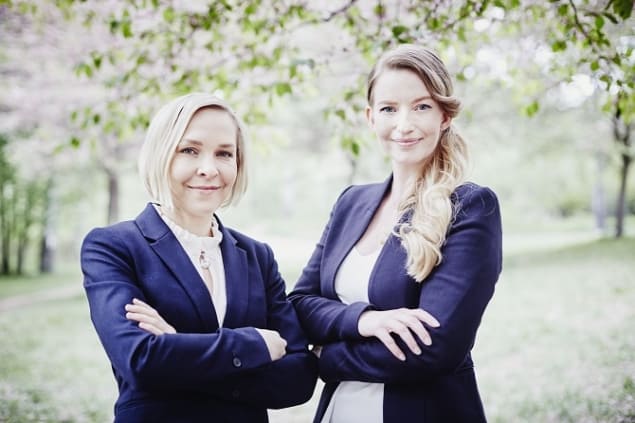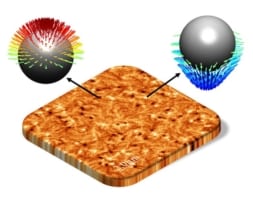
While a lot of biomedical researchers aim to save lives, Suvi Haimi, CEO and co-founder of Sulapac, wanted to save the planet. “We were devastated by the plastic pollution of the oceans,” says Haimi. Working in biomedical materials research at the time, she realized she could use her expertise in this field to develop an alternative to plastic.
Sulapac produces materials made from wood composites using natural binders derived from starch and glucose. Their products are 100% biodegradable and contain 0% microplastics.
Founded in 2016, the company’s first focus was the cosmetic industry. “I looked in my bathroom cabinet and saw it was full of plastic,” says Haimi. Unsurprisingly, there was more to the decision of which industry to focus their initial attention on than a cursory glance while getting ready for bed. “We spent a lot of time looking into customer segments,” Haimi told Physics World. “A new material costs money so we needed pioneering customers.” They then spent a lot of time defining the properties with their customer, bringing not just a material to market but a full design. Haimi believes this may be a crucial factor in the company’s success, compared with others who have attempted to introduce environmentally friendly plastic alternatives.

Plastic particles now infest the Arctic
Embarking on a portfolio for the food sector will require new designs, but Haimi believes this should be easier the second time around. Certainly there is plenty of demand for alternatives to plastic for food packaging to protect and prolong food lifetimes and reduce food waste.
In May 2018 Sulapac started collaborating with Fazer, a leading producer of food and food services in the Baltic region, who plan to use Sulapac materials for packaging their Christmas products in December 2018. “Fazer is actively involved in discussions on recycling and re-use of packaging waste, as well as the development of new kinds of environmentally friendly packaging solutions,” says Nina Elomaa, Corporate Responsibility Director of the Fazer Group.

Sustainability at every stage
Haimi and co-founder Laura Kyllӧnen have long been aware of the plastic pollution issue on account of their field of work. But while a lot of public education work was previously needed to raise awareness, nowadays plastic pollution is big news with the general public too. Yet in some ways available alternatives lag behind demand.
“A lot of alternatives to plastics are only 97% biodegradable and still contain 3% microplastics,” Haimi comments. “We think 0% microplastics is important.”
She also highlights her concerns about the slow biodegradation rate of some bioplastics, such as polylactic acid, which can still take 10 years to degrade in the ocean. Sulapac use barrier materials inside their jars to keep the contents sealed from the environment, and this barrier layer is the slowest to biodegrade. Yet testing their materials in industrial compost, Sulapac products degrade in less than 30 days in compost, which is even a little faster than wood.
Haimi and her team are keen to establish the sustainability of every stage in the life cycle of their products from production to re-use and recycling, and studies to clarify this are ongoing. Already the company is keen to source the wood sustainably using local resources, and while the world’s forests may not cope with demand if everyone switched entirely from plastic to Sulapac material, Haimi says they can use a range of primary materials including grass.
They also use unprocessed wood, which both saves energy and improves the scalability of production. Another bonus in their production compared with other ecological packaging material producers is that they can use the same moulds as plastics, saving on resources and reducing obstacles for companies to work with Sulapac composites instead of plastic.
Next steps
Now in its second year, the company began as the brain child of Haimi with Kyllӧnen, who was her first graduate student. They soon brought on board Taneli Vӓisӓnen and Antti Pӓrssinen, who not only had expertise in wood composites but had also founded their own company and could bring their business experience to the table as well.
In the interests of staying focused enough to remain successful, Sulapac will not be working on alternatives to plastic bags. “There are good alternatives for this already,” says Haimi. However, they are looking into flexible versions of the material for other single-use applications to further increase the impact of their products in reducing plastic pollution.



